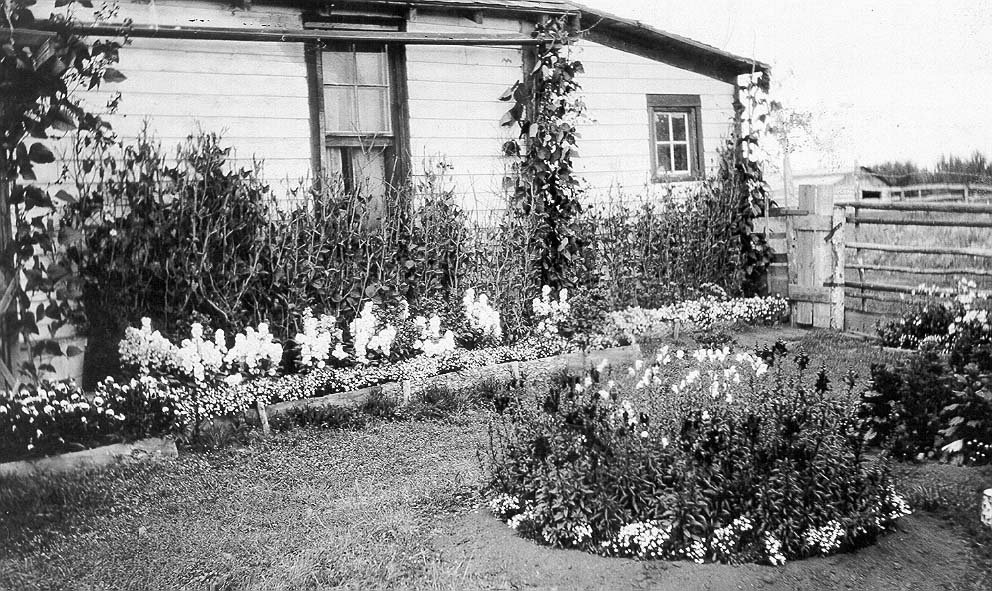Image: The garden at the Clough home at Sturgeon Lake. Mr. Sutcliffe, the gardener, was also a forest ranger. (SPRA 175.028.04)
Archival records contain traces of the past, in more ways than one. The practice of pressing flowers as a form of scientific study or art has existed for centuries. In Archives, these organic materials can offer both a pleasant surprise and preservation challenge.
By the time they arrive in the Archives, most pressed flowers are extremely delicate and at risk of deterioration. Rarely, they may pose additional risks to accompanying documents by staining paper, retaining moisture, or even harbouring pests. Therefore, in some cases, we remove these specimens to be stored separately from the original document. Each collection is assessed by our Archivist and handled on an case-by-case basis to ensure its preservation.
When Olwen Sanger-Davies documented her journey from England to the South Peace in 1933, she collected plant specimens and placed them alongside her notes, photographs, and paintings. Climbing Sulphur Mountain in Banff, Olwen wrote: “up & up we wound getting marvelous peeps of the valleys & finding various new flowers, green orchids & a small pink lady slipper orchid, & also nice bits of the Rocky Mountains.” She included three pressed flowers, demonstrating the species she encountered.
In the case of Olwen’s scrapbooks, all pressed flowers were removed for preservation. First, a digitization specialist carefully scanned each page of the scrapbooks, maintaining the flowers in their original position. Then our Archivist gently removed each specimen, marking their location with pencil to document the removal. The flowers are now stored in acid free envelopes, labelled with their original location. Archival-quality scans ensure future users can view the scrapbooks in their original form, while separation ensures their mutual preservation.
Despite the challenges they pose, pressed flowers are a valuable addition to archival records. They can mark a moment of engagement between records, their creators, and users. They can contribute to a historical record of vegetation in a specific location. They can be admired for their beauty and studied for their botanical knowledge. Pressed flowers are treasures for future generations to discover.
This article was originally featured in the June 2019 issue of Telling Our Stories.
